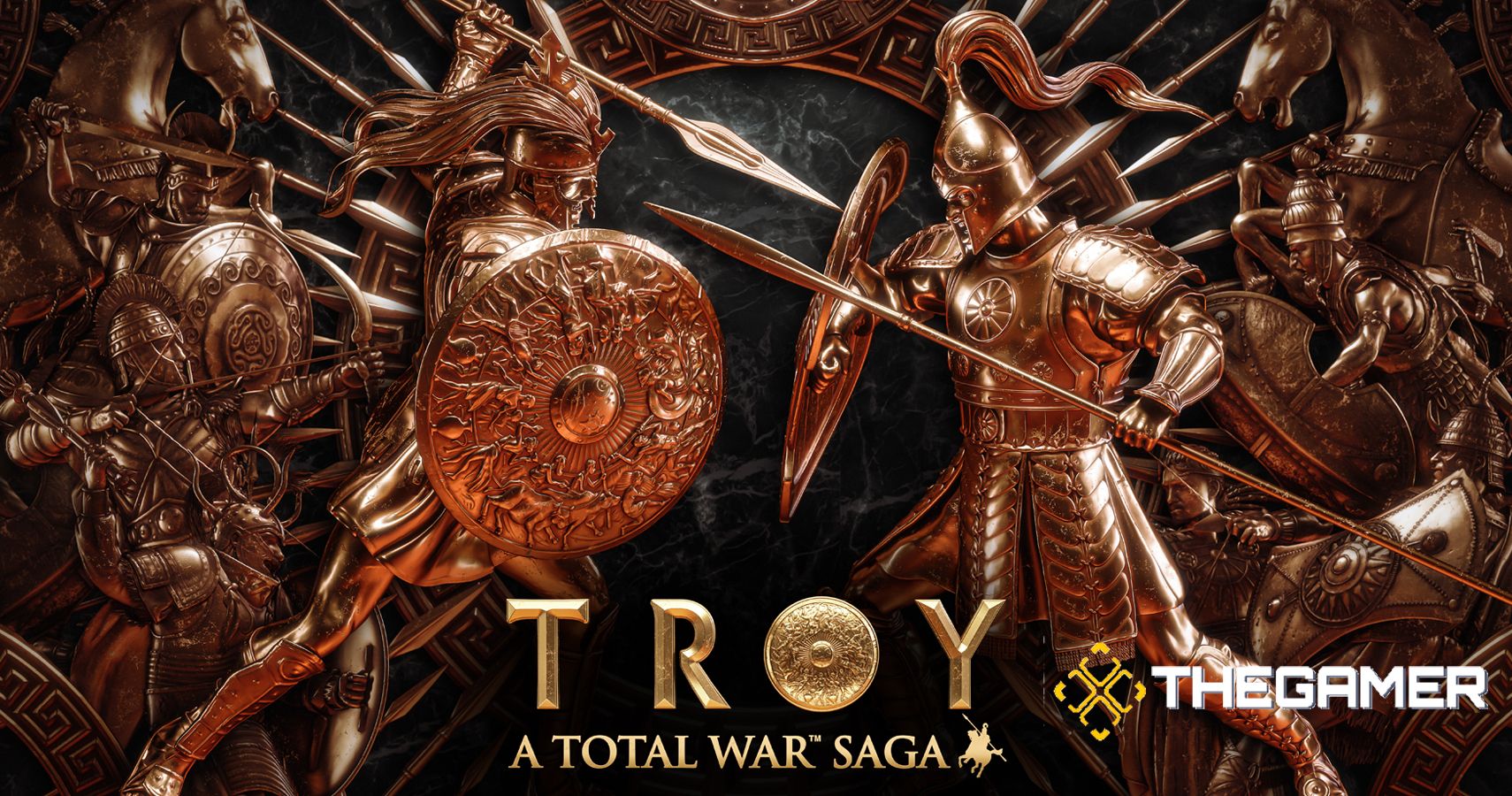

That means that large stone formations can be used to create chokepoints, muddy ground can be used to slow down enemy armies, and tall grass can be used to hide a pack of skirmishers. The same can also be said for the maps, which feature a larger amount of natural obstacles than I remember seeing in past games. This is interesting in theory, and I want to see Creative Assembly explore this route in future games if they decide to take lessons from Troy and apply them elsewhere. For example, one unit can switch to javelins to throw at advancing soldiers before switching back to a sword and shield just as the enemy gets within melee distance. More than just a block of people with a certain weapon type, many units have a wide array of abilities that allow them to hide or switch out weapons. Units range from heavily armored and shielded spearman who excel at holding a position, to lightly swordsman who suspiciously feel as though they are as fast as horses and can flank easily, to a bunch of men wielding nothing more than a club. Infantry are categorized into light, medium, and heavy, with multiple types of units in each that offer a wide variety of strategic possibilities. This would normally upend how one goes about engaging in war, but Troy instead opts to make infantry units more diverse than they’ve ever been before. In other words, no cavalry apart from chariots. And as familiar as this may be, Troy’s status as the earliest time period that a Total War game has been set in makes it more compelling in ways I didn’t anticipate.įor one, Bronze Age civilizations have not yet discovered the art of breeding warhorses that can carry armored soldiers to war. Regardless, Troy features the same mix of strategic management of your kingdom on a map and real-time tactical battles that can be found in any other entry in the franchise. Picking one of eight factions, of which there are four per side, you must conquer the world in either classic Total War style or through following a Homeric journey that sees your chosen leader embark on an epic quest.

Total War Saga: Troy – Review Screenshot Provided by Creative Assembly/Sega The Aegean Sea is depicted as a Bronze Age cradle of civilization where most buildings are rudimentary huts, where heroes like Achilles are not superhuman but merely powerful warriors, and where the Minotaur is not a half-man, half-bull, but simply a large human wearing a bull’s skull on his head. But whereas Total War: Three Kingdoms can be described as reality viewed through myth, Troy is myth viewed through reality.

And while the latest, Total War Saga: Troy, does contain a few interesting turns on the franchise’s formula, it’s Total War’s all too familiar trappings that win out and hold back what is otherwise a fascinating game.Īs the name suggests, Total War Saga: Troyis set in the mythical war between the Greeks and Trojans made famous in Homer’s Iliad. Total War Saga’s are, in theory, meant to be more contained and experimental in comparison to the likes of Creative Assembly’s major historical titles or its take on Warhammer Fantasy. Gameplay improvements are incremental with each new entry, as old problems never quite go away and new ones arise and fall with each cycle.
TOTAL WAR SAGA REVIEW SERIES
Shield walls and flanking are interesting tactical choices of course, but now having to work the third dimension of flight, weighing the pros and cons of anti-large units, and figuring out how best to cast the healing spells of Hydra Cult magic users keep things interesting for longer.Total War has become a series that, despite widely disparate settings, rarely shakes up its formula. The greatest monsters must be hunted through quests that will have players organizing and outfitting expeditions, choosing which monsters to pursue, and significantly altering gameplay based on their decisions. Total War: Warhammer, one of the Warhammer games not hurting the brand, was first to add this tactical depth, but Mythos weaves monsters into the wider strategy. Limiting players to bronze age warriors of the Mediterranean is offset by the inclusion of gigantic units, flying units, magic casting units, and special versions of standard units with distinct abilities and powers. That diversity, the major selling point of Mythos, stands up under the scrutiny of extended play.
TOTAL WAR SAGA REVIEW UPDATE
Related: Total War: Warhammer 2 Update May Confirm Ogres for Warhammer 3


 0 kommentar(er)
0 kommentar(er)
